 W
WThe Battle of Achnashellach was a Scottish clan battle said to have taken place in the year 1505, in the Scottish Highlands at Achnashellach. It was fought by the Clan Cameron against the Clan Mackay and the Clan Munro.
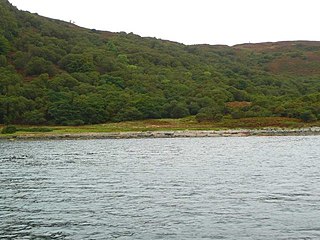 W
WThe Battle of Allt Camhna was a Scottish clan battle fought in 1586 between the Clan Gunn and Clan Mackay against the Clan Sinclair.
 W
WThe Battle of Leckmelm was a Scottish clan battle that took place in 1586, in the Scottish Highlands. It was fought between the Clan Gunn against the Clan Sutherland, Mackays of Aberach and the MacLeods of Assynt.
 W
WThe Battle of Alltachuilain (or Ald-Quhillin was a Scottish clan battle that took place in 1518 or 1519 in the parish of Loth, county of Sutherland, Scotland. It was fought between factions of the Clan Sutherland in a dispute over the Earldom of Sutherland.
 W
WThe Battle of Alltan-Beath also known as the Battle of Ailtan-Beath was a Scottish clan battle said to have taken place in the year 1542 in the village of Knockarthur, in Sutherland, in the Scottish Highlands. It was fought between men of the Clan Mackay and men of the Clan Sutherland whose chiefs were the Gordon, Earls of Sutherland.
 W
WThe Battle of Bun Garbhain was a Scottish clan battle fought in 1570, in the Scottish Highlands, between the Clan Cameron and the Clan Mackintosh.
 W
WCastle Chanonry of Ross, also known as Seaforth Castle, was located in the town of Fortrose, to the north-east of Inverness, on the peninsula known as the Black Isle, Highland, Scotland. Nothing now remains of the castle. The castle was also known as Canonry or Chanonrie of Ross, the former county.
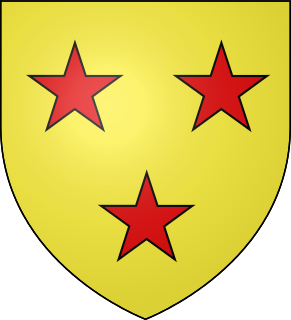 W
WThe Battle of Clynetradwell was a Scottish clan battle that took place in 1590 in the county of Sutherland between the forces of Alexander Gordon, 12th Earl of Sutherland and George Sinclair, 5th Earl of Caithness.
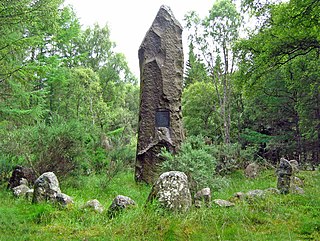 W
WThe Battle of Corrichie, also known as the Battle of Corrichy was a battle fought near Meikle Tap, near Aberdeen, Scotland, on 28 October 1562. It was fought between the forces of George Gordon, 4th Earl of Huntly, chief of Clan Gordon, against the forces of Mary, Queen of Scots, under James Stewart, 1st Earl of Moray.
 W
WThe Battle of Craibstone was fought on 20 November 1571 between Clan Gordon and the Clan Forbes on an area that has now been constructed over, found in central Aberdeen, Scotland. It was part of the Marian civil war in which the Clan Forbes supported the King James VI and the Clan Gordon supported Mary, Queen of Scots.
 W
WThe Battle of Drumchatt, or Druim-a-Chait, was a Scottish clan battle claimed by non-contemporary historians to have taken place in the year 1501 near Strathpeffer, in the Scottish Highlands. It was allegedly fought between the Clan Mackenzie and the Clan Munro. Mackenzie chronicles have claimed a signal victory.
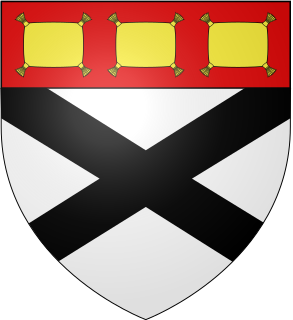 W
WThe Battle of Dryfe Sands was a Scottish clan battle that took place on 6 December 1593, near Lockerbie, Scotland. It was fought between the Clan Maxwell and Clan Johnstone after a hundred years of feuding between them. The Johnstones won a decisive victory over the Maxwells.
 W
WThe Battle of Garbharry was a Scottish clan battle fought in the year 1555. It was the last battle to be fought between the Clan Mackay and Clan Sutherland. It was fought "beside the water of Garbharry", at "the foot of the hill called Beinn-mhor, in Berriedale". This has been recognised as the area around Garvery Hill, including Big and Little Garvery Burn, just south of Morven, where presumably some of the soldiers drowned.
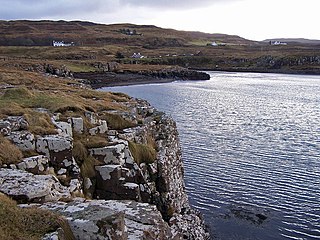 W
WThe Battle of Glendale was a battle fought on the Inner Hebridean Isle of Skye, between the MacDonalds of Sleat and the MacDonalds of Clanranald, against the MacLeods of Harris and Dunvegan and the MacLeods of Lewis. According to MacLeod tradition preserved in the early 19th century, the battle was fought in about the year 1490; yet it has been recently suggested that the battle more likely took place sometime after 1513. MacLeod tradition records that the battle was the 'most tremendous battle' that the clan ever fought—although the clan was victorious, it never fully recovered from its severe losses. MacLeod tradition relates how the MacDonalds originally had the upper hand during the conflict, but when the MacLeod's sacred Fairy Flag was unfurled the MacLeods gained heart and won the battle.
 W
WThe Battle of Glenlivet was a Scottish clan battle fought on 3 October 1594 near Glenlivet, Moray, Scotland. It was fought between Protestant forces loyal to King James VI of Scotland who were commanded by Archibald Campbell, 7th Earl of Argyll, against Catholic forces who were commanded by George Gordon, 6th Earl of Huntly, and Francis Hay, 9th Earl of Erroll. The Catholics won a decisive victory in the battle, but in the aftermath were subdued by King James.
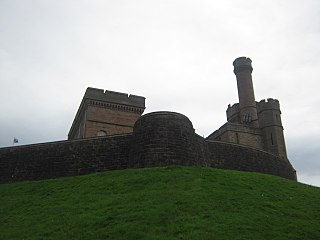 W
WThe siege of Inverness Castle took place in 1562. When Mary, Queen of Scots, visited Inverness on 9 September 1562 the gates of the castle were shut in her face by Alexander Gordon upon the orders of George Gordon, 4th Earl of Huntly, who was chief of Clan Gordon and Sheriff of the county. The castle was subsequently besieged by supporters of the Queen.
 W
WThe Battle of Traigh Ghruinneart or in Scottish Gaelic Blàr Tràigh Ghruineart or sometimes called the Battle of Gruinart Strand was a Scottish clan battle fought on 5 August 1598, on the Isle of Islay, in the Hebrides. It was fought between the Clan Donald and Clan Maclean. A tràigh or stand is the flat area of land bordering a body of water, a beach, or shoreline.
 W
WThe Battle of Knockmary was a Scottish clan battle fought in 1511, or 1490 between the Clan Murray against the Clan Drummond and Clan Campbell, north of Crieff, Scotland.
 W
WThe Battle of Logiebride or Logie-Riach, also known as a Tumult in Ross was more of a small skirmish rather than an actual battle. The disturbance is said to have taken place on 4 February 1597 at the Logie Candlemas market near Conan House between men of the Clan Mackenzie against men of the Clan Munro and the Bain family of Tulloch Castle.
 W
WThe Marian civil war in Scotland (1568–1573) was a period of conflict which followed the abdication of Mary, Queen of Scots, and her escape from Lochleven Castle in May 1568. Those who ruled in the name of her infant son James VI fought against the supporters of the Queen, who was exiled in England. Edinburgh Castle, which was garrisoned in her name, became the focus of the conflict and surrendered only after an English intervention in May 1573. The conflict in 1570 was called an "intestine war in the bowels of this commonwealth", and the period was called soon after an "intestine war driven by questions against authority."
 W
WThe Battle of Melrose was a Scottish clan battle that took place on 25 July 1526. Walter Scott of Branxholme and Buccleuch attempted to rescue the young James V of Scotland from the powerful Archibald Douglas, 6th Earl of Angus.
 W
WThe Battle of the Shirts was a Scottish clan battle that took place in 1544 in the Great Glen, at the northern end of Loch Lochy. The Clan Macdonald of Clanranald and their allies the Clan Cameron fought the Clan Fraser and men from Clan Grant. The battlefield has been included and protected by Historic Scotland in their Inventory of Historic Battlefields in Scotland.
 W
WThe Battle of the Spoiling Dyke (also known as the Battle of the Spoiled Dyke, was a Scottish clan battle that took place in 1578, fought in the Scottish Highlands, between the MacDonalds of Uist and the Clan MacLeod.
 W
WThe Raids of Urquhart were two raids carried out in the vicinity of Urquhart Castle in the Scottish Highlands in October 1544 and April 1545 where a large amount of cattle, horses, harvest, furniture and military equipment were stolen from the Clan Grant, a Highland Scottish clan, by the Clan Cameron and Clan MacDonell of Glengarry, both also Scottish Highland clans.
 W
WThe Battle of the Western Isles was a series of conflicts in 1585 and 1586 on the islands of Jura, Islay, Mull and Tiree, Scotland as well as the peninsula of Kintyre on the mainland. However, although the historic sources describe this as having taken place in the "Western Isles" which are now known as the Outer Hebrides, all of the aforementioned locations are actually in the Inner Hebrides. It was fought between the Clan Macdonald of Sleat and Clan MacDonald of Dunnyveg against the Clan Maclean. In 1585, the Macleans slaughtered a party of the MacDonalds of Sleat when they were mistakenly accused of stealing cattle and the MacDonalds of Sleat and Dunnyveg retaliated. James VI of Scotland intervened but the conflicts continued into 1586. After further intervention an Act of Parliament was passed which would levy fines on any clan chiefs who did not maintain peace and good order among their vassals.